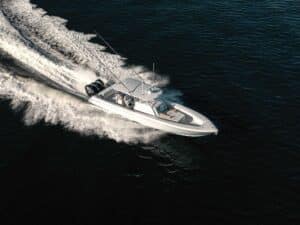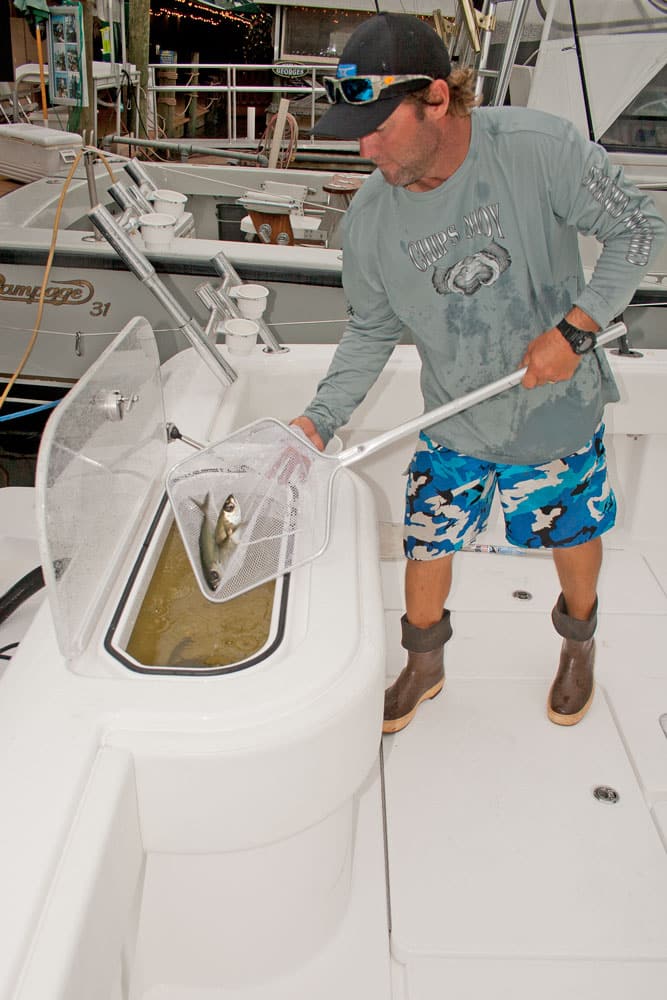
A livewell pump is like the water heater in your house. You don’t think about it much until it stops working and ruins your day. Then you wonder how to fix it quickly.
If you’re like me, when a baitwell pump goes bad, you tend to swap it out for the same model, and that’s not a bad way to go, especially if you liked the way the old pump worked. Yet if you weren’t exactly pleased with the performance of the old pump, it might be time to re-evaluate your choice.
Livewell systems in today’s better fish boats perform well — so well you hardly think about them. Yet in older boats, I’ve seen a fair number of problems. My boat, a 1986 center-console, came with a self-priming livewell pump displacement pump. It wasn’t until that pump failed and I replaced it with a centrifugal pump that I realized I had the wrong pump livewell for the boat. The centrifugal model made the bait much happier.
Based on my 35 years of fishing with live bait and rigging boats, I offer 10 tips I’ve learned — many by trial and error — for selecting and installing a livewell pump.
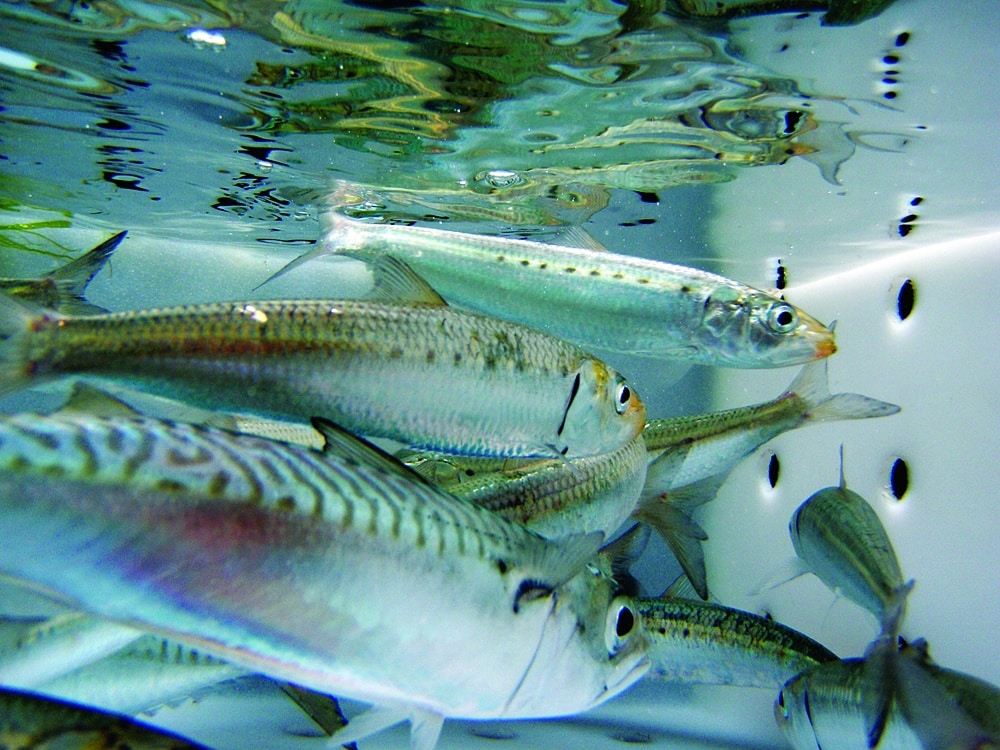
1. Use a Centrifugal Pump
Today, centrifugal pumps from brands such as Jabsco/Rule, Johnson and SHURflo are about the only types you’ll find in new saltwater fishing boats. That’s because these pumps introduce water more gently and naturally than do displacement or diaphragm pumps, which jet or pulsate in a manner that seems to have an unsettling effect on live bait. Also, most centrifugal pumps are quieter, some almost silent when running, which I appreciate during a long day on the water. When planning a new livewell pump installation, consider a centrifugal pump.
2. Choose the Correct Capacity
You want a pump with the capacity to replace the livewell water at least every 10 minutes (six times each hour). If you have a 100-gallon fishing livewell, you need to deliver 600 gallons per hour (100 gallons x 6 times per hour = 600 gph). You also need to account for the drop in pressure as the pump lifts water from the bilge to the livewell. For example, lifting water 40 inches reduces the delivery volume (versus no lift) by about 30 percent. So if you must raise the water 40 inches from intake to well, a 600 gph baitwell pump delivers only about 420 gph. A better choice in this case would be an 1,100 gph pump, such as a Rule Tournament Series 1100 or SHURflo Piranha 1100. Both would deliver roughly 770 gph to the livewell with 40 inches of lift. Error on the side of more capacity than you need, then “valve it down,” as outlined in tip No. 6.
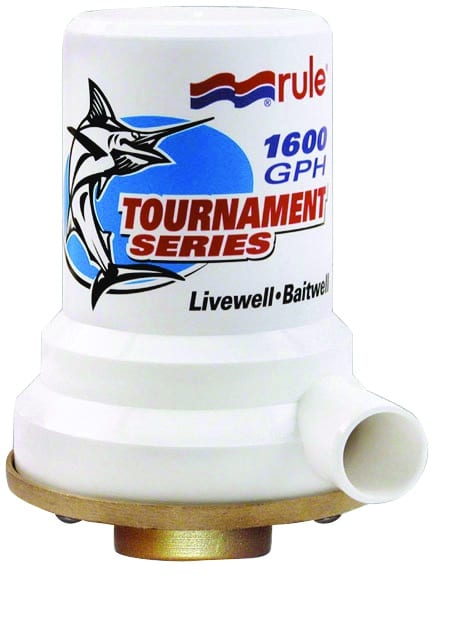
3. Mount the Livewell Pump Below the Water-line
Unlike a displacement pump, a centrifugal pump is not self-priming. To function properly, centrifugal models must be mounted below the waterline with the boat at rest. In the earlier example of my 1986 center-console, had I mounted the centrifugal pump where the old displacement pump had been, the new pump would not have worked. Keep this in mind when mounting your livewell pump replacement. This might sound elementary, but I have seen a number of centrifugal pumps mounted too high in the bilge, leaving boat owners scratching their heads as to why the livewell won’t fill.
4. Install an Intake Strainer
Through-hull bronze intake strainers from companies such as Groco mount on the bottom of the boat to help keep debris such as weeds from clogging the pump impeller. These have a scoop shape that faces forward to help deliver water to the pump while underway. Water intakes on stepped hulls are usually positioned in front of the first step to minimize the amount of air and maximize the amount of water fed to the pump. Avoid mounting the intake in front of a transducer, as it can create interference in the form of aeration over the face of the transducer. Also, if you trailer your boat, avoid installing the intake where it will interfere with trailer bunks or rollers.
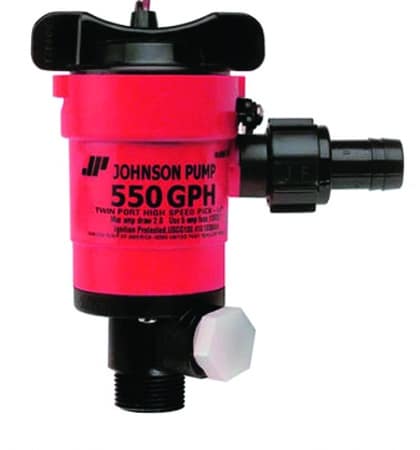
5. Use a Seacock for Safety
Seacocks — heavy-duty ball valves attached to through-hull fittings — serve a critical safety function with any pump installed below the waterline, allowing you to quickly shut down a leak. Whether the livewell pump is mounted independently, in a pump box or on the valve stem, make sure there’s a seacock between it and the hull interior.
6. Valve It Downstream
Placing a ball valve downstream of the pump gives you the option of reducing the delivery volume. This can be handy if, for example, you have a pump that delivers more water than you really need, as too much flow can harm delicate bait species such as pilchards. As with a seacock, a valve on the other side of the pump is also a safety feature, allowing you to stem a leak downstream. I prefer bronze or stainless-steel ball valves. Double-clamp all hose fittings on the hose barbs.
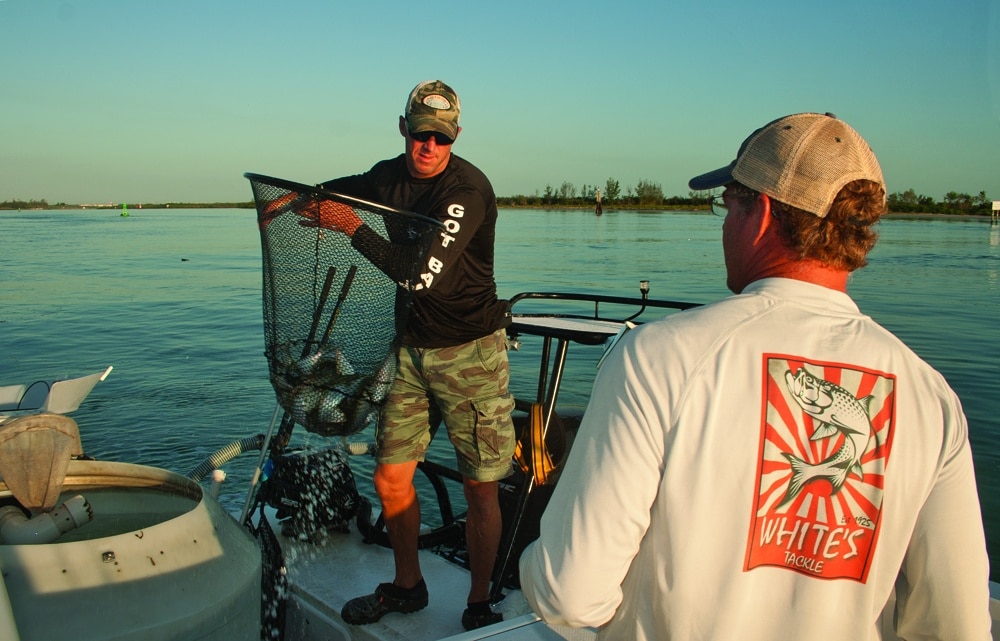
7. Point the Pump’s Outlet Upward
If you mount the pump horizontally, it’s important to position the outlet upward. This will help prevent air from getting trapped and creating an airlock. Some pumps allow you to adjust the angle of the outlet fitting for this very reason.
8. Install a Pump Box
High-performance fishing machines can get airborne, allowing the pump to ingest air, lose prime or develop an airlock, which will kill bait. A pump box is the best solution, so consider it during your livewell pump installation. Offshore Bait Solutions offers boxes with a single intake and bilge pumps inside (such as Rule 1500s), bronze plumbing, air-vent fittings and removable clear-acrylic lids. Bilge pumps work here because they use the same motors and impellers as in centrifugal livewell pumps. Yet instead of being connected directly to an intake, these pumps pick up the clean water from inside the flooded pump box, just as they might pick up dirty water from the bilge, but instead deliver the water to the livewell. The boxes secure inside the bilge below the waterline, as level and as far aft as possible.
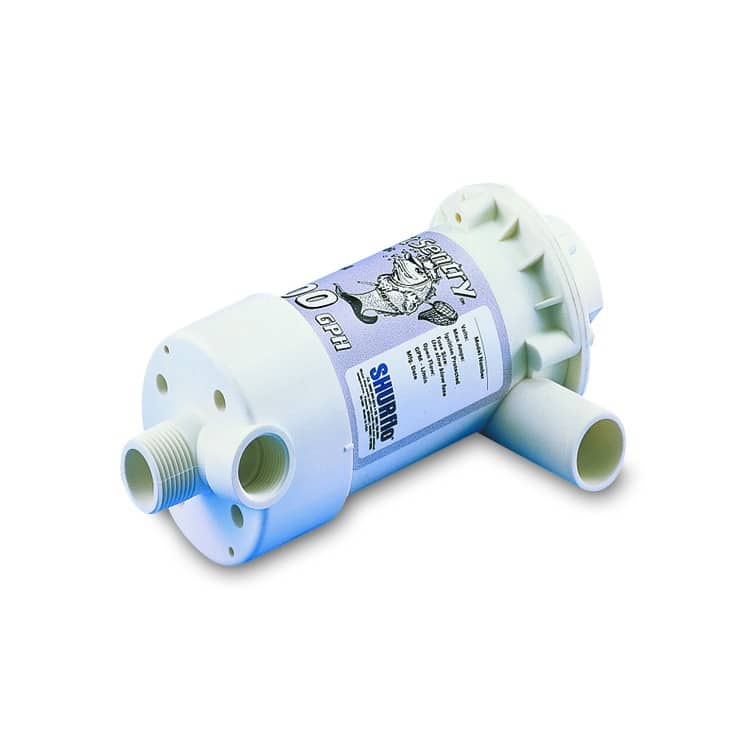
Magnetic Drive
9. Use a Livewell Flow Sensor/Alarm
At some point, your livewell pump will fail you — either from wear and tear, a poor electrical connection, or clogging debris. A flow sensor/alarm such as the Baitwatch from Signet Marine alerts you immediately to the lack of water flowing to the livewell, hopefully giving you time to save your bait by transferring to a secondary well or pen while you fix the problem. It’s better than discovering a tank of dead bait after you’ve run 30 miles offshore.
10. Consult a Livewell Specialist
If you don’t consider yourself a do-it-yourselfer, find a shop or rigger in your area that has experience with livewells to advise and install the best pump and system components for your boat. The livewell pump might not be something you think about often, but an experienced shop deals with bait pump-ology all the time.




